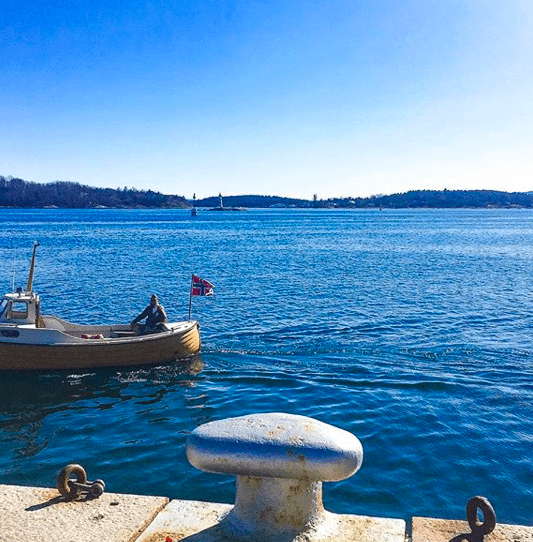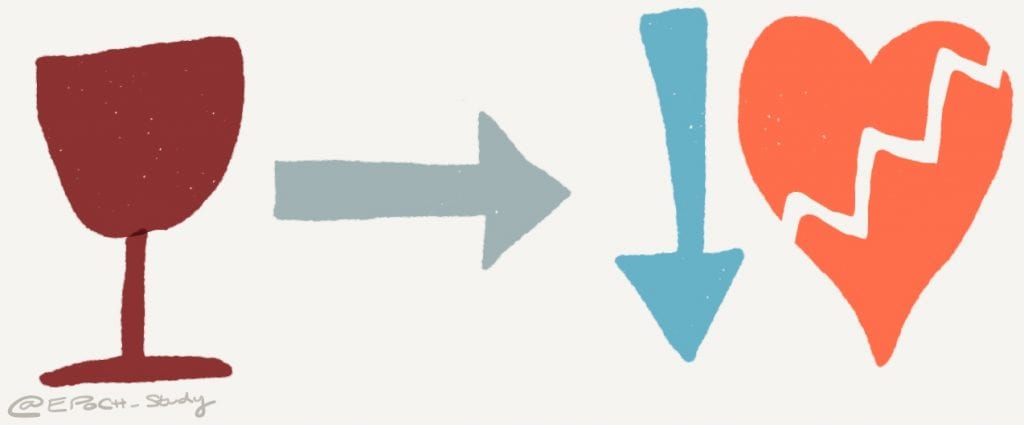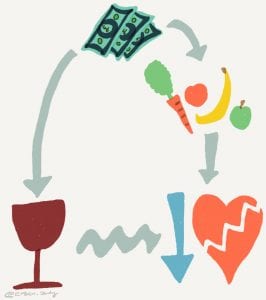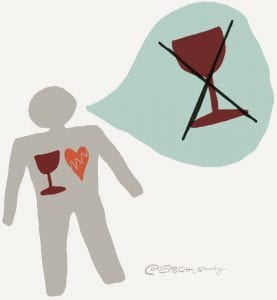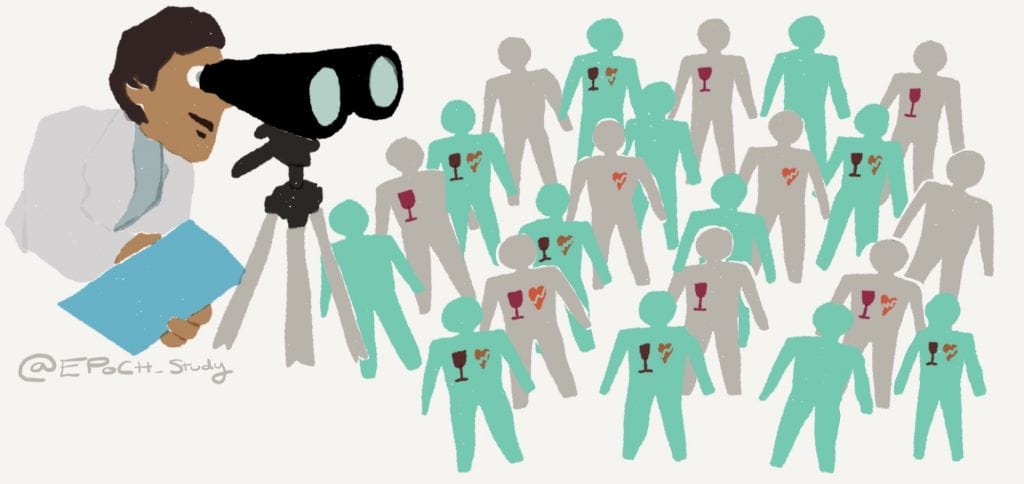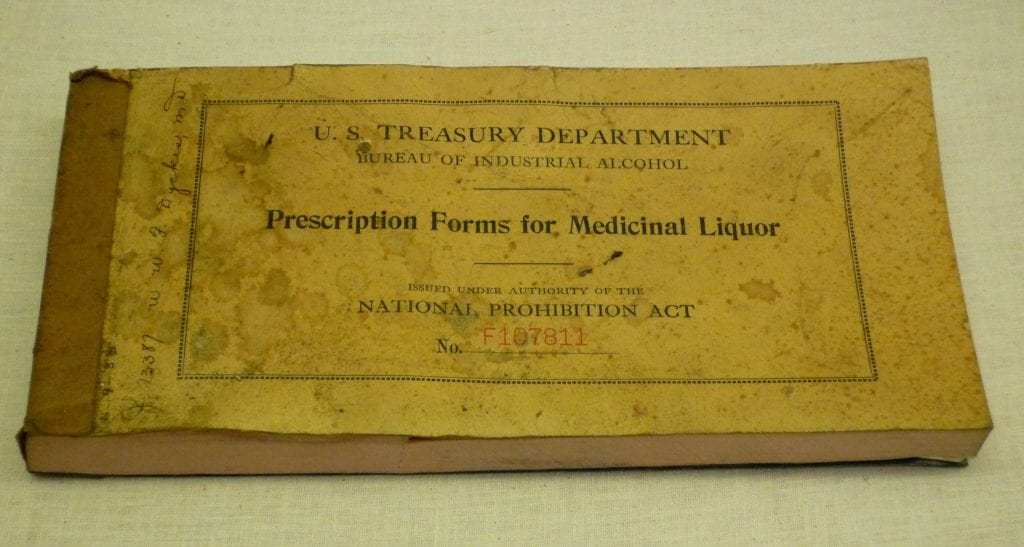Although the EPoCH blog will mostly be about plans, activities and findings directly related to the EPoCH project, I also want to use it to give a bit of an insight into our other activities (and when I say “our”, I currently mean “my”, until I find someone to help me…).
I recently spent 10 weeks visiting the Centre for Fertility and Health at the Norwegian Institute for Public Health in Oslo. I was really lucky to get a Gro Harlem Brundtland scholarship from the Centre, which funded my stay.
So I thought I’d share my reflections on an experience that will undoubtedly influence how I approach the EPoCH project now that it has officially started (eek!).
The first thing to say is…
Oslo is awesome…
I really enjoyed being in Oslo. The Centre for Fertility and Health is housed in this brutalist concrete block above a bike shop and a music shop. If you really like concrete, wood and brass staircases (and, it turns out, I really do), this place is for you. I don’t know how to make this not sound sarcastic, but I genuinely love this building.

Here’s a list of all the things I was working on while I was there:
- I put together a couple of project ideas (one using maternal epigenetics to predict adverse pregnancy outcomes, and one using a qualitative research method to identify the needs and challenges faced by pregnant couples).
- I started to think more clearly about another couple of early ideas (one around rising trends in age at first birth, and one around the impact of climate change on fertility and health).
- I carried out research using UK survey data to explore reproductive “intentions” in teenagers (i.e., what factors are associated with teenagers’ intentions to have or not have children, and the age at which they say they want to start a family).
- I applied for ethical approval to access Norwegian data (from the MoBa cohort) for the EPoCH study.
- I advertised for a new position as a (senior) research associate on the EPoCH study.
- I made a short animation to explain EPoCH.
- I started planning the EPoCH research advisory panel.
- I read the first draft of a collaborator’s new book on maternal effects (and visited this collaborator in Berlin).
- I wrote a couple of papers I’d started working on in Bristol (a large study on paternal BMI and offspring methylation, and a review of paternal impacts on offspring risk of obesity and type 2 diabetes).
- I collaborated (remotely!) with artist Olga Trevisan to create a piece of art based on my research for the Creative Reactions exhibition (more on this soon).
- I supervised my PhD student (Laura) while she is on her own academic visit to Rotterdam.
- I reviewed abstracts for the Developmental Origins of Health and Disease (DOHaD) conference later this year.
- I planned lectures for a couple of courses coming up in the Summer.
- I helped organise a teaching team and planned content for a unit on molecular epidemiology as part of Bristol’s new MSc in Epidemiology.
- I marked students’ work from two undergraduate courses I teach back in Bristol.
- I took one week out to come back to Bristol to teach a short course on Epigenetic Epidemiology and celebrate my first PhD student, Dr(!!) Diana Juvinao Quintero, passing her viva.

And here’s a list of all the things I got up to outside of work:
- I marvelled at the beautiful ever-changing view from my apartment as Oslo went from being covered in bright white, deep, compacted snow to being all shades of green and warm (24 degrees!). I could have watch it all day. I miss it.
- I walked down the river from my apartment into town, noticing how nearly all Norwegians look impressively healthy and wholesome and also know how to quietly enjoy a river (my favourite type of person is quiet). Also at least half of the prams were being pushed by men (!!).
- I spent time with some lovely Norwegian people, most notably Maria and Ellen, who I enjoyed many (very healthy) lunches with. I miss them! (The lunches and the people.)
- I caught buses and trams all over Oslo… I love an efficient tram system 🙂
- I walked on the roof of the opera house (the only opera house I’ve ever walked on the roof of).
- I enjoyed a two hour sightseeing boat tour of the Oslo fjord.
- I saw Bristol-born New Zealand-raised Tiny Ruins (supported by a woman with hand pumped harmonium) play at a lovely venue I’ve forgotten the name of.
- I visited a flea market in Grünerløkka school.
- I drank a lovely glass of red wine looking across the harbour from the seats outside Salt (a sort of giant communal sauna… which sounds like a nightmare, but it was ok because you could also just have a drink with all your clothes on). Sauna-aside, Salt is the most “Bristol” thing I found in Oslo (I’m not advocating they should put a giant communal sauna in Stokes Croft).
- I drank a lovely refreshing Aperol spritz from the terrace of the restaurant in Ekebergparken, with an impressive view of the city.
- I walked through the forest in Ekebergparken (twice… because it was so amazingly beautiful there).
- I caught the Holmenkollen line train up to Frognerseteren and walked around a bit (again, twice because it’s so beautiful). The train ride alone is a big part of its charm.
- I saw some art that I liked at the Astrup Fearnley Museum of Modern Art.
- I fed a rabbit a dandelion at the Norwegian Museum of Cultural History.
- I caught a boat to and then walked around Bygdøy.
- I went shopping in Majorstuen.
- I ate delicious cupcakes in Mathallen (a food hall… I think that’s even the literal translation).
- I watched a LOT of the only English-speaking TV programmes I’ve found on TV (British quiz show Pointless and American sitcom Modern Family). Seriously, I must never watch these programmes again. It has been too much.
- I developed an obsession with peanut butter on Wasa crisp breads… You’d think crisp breads would be much of a muchness, but Ryvitas are nowhere near as good as these things.
- I ran (for less than three minutes) in one of the world’s biggest relay races with a team from the institute where I was working. This was really fun and in hindsight didn’t warrant the stress I put myself through worrying about being really slow or falling over… (I was really slow, but I didn’t fall over, so I’m marking that up as a success).
- I got a ferry to an island for a tour and a lovely meal during the Centre annual symposium. It was nice to catch up with people from Bristol since they were visiting too.
- I celebrated Norwegian constitution day by watching the parade, going to a streetfood hall, then catching the train out of Oslo to visit a colleague and her husband on her lovely farm (where I met two cats, two rabbits, two horses and got to look around an amazing museum of old radio and TV-related technology).

…But it helped remind me that home is pretty good too

I managed to get up to quite a lot while I was in Oslo, both in and out of work, but the thing I valued most was the opportunity to step back from the day-to-day firefighting of academia and think more deeply and clearly about my research and my approach to my work, and I guess my non-work, life.
It was so nice to have time and space to think. Away from all the other competing commitments. I had so many ideas (of varying quality, obviously), and I was able to read and write about them instead of just burying them because I’ve got to reformat my CV or review five papers or whatever… It helped remind me why I really like my job. And now I’m back in Bristol I feel pretty refreshed and really excited to get started on the EPoCH project.
It’s funny because (as anyone who spoke to me in the weeks leading up to the visit will attest) I was really apprehensive about being away from home for so long. I love my family and friends and Bristol and my new (slightly shambolic, slightly falling down a hill, slightly in need of a complete rewiring) house and my lovely strange little cat, Alan. But, I really surprised myself at how “okay” I was. I even occasionally felt like I was thriving away from home. Which isn’t to say I wasn’t really looking forward to coming back, but it made me realise that my love for “home comforts” is still on the right side of healthy… So that’s good 🙂
If I ever get the opportunity to do something similar again, I’m jumping on it.
TL;DR
I’m really glad I went to Oslo for ten weeks.
